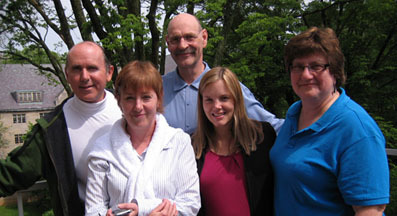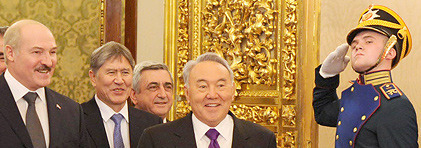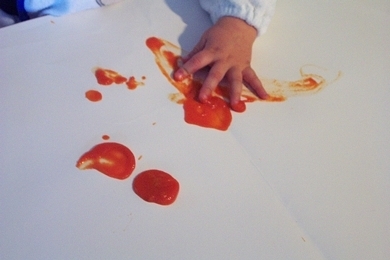Marc Abrahams's Blog, page 419
March 10, 2014
Him, and his theory of things
Do you have a theory of things? Bunge has a theory of things. And Bunge has something to say about someone who said something about his theory of things:
“Reply to Van Rootselaar’s Criticisms of My Theory of Things,” Mario Bunge [pictured here], International Journal Of General Systems, no. 3 (1977): 181-182. Bunge, McGill University , Montreal, Canada and Universidad Nacional Autónoma de México, explains:
“Van Rootselaar criticizes some points in my theory of things for being allegedly trivial, others for being mistaken. While some results are indeed mathematically trivial they are not so philosophically. As for the mistakes, some arc undoubtedly there, most can be corrected easily, and others require changes that have been introduced in the final version of the theory. The rest arc not mistakes but misunderstandings, perhaps unavoidable given the brevity of the original paper.”
BONUS: The Primitive Theory of Things

“Being drunk and high during sex is not associated with condom use”
When one speaks of sex, drunkenness, and condoms, one can phrase one’s words in a manner that is indirect and genteel. Want an example of that? See the title of this study:
“Being drunk and high during sex is not associated with condom use behaviours: a study of high-risk young Black males,” Richard A. Crosby [pictured here], Robin R. Milhausen, Stephanie Sanders, Cynthia A Graham and William L. Yarber, Sexual Health, epub March 4, 2014. The authors, at the University of Kentucky, The Kinsey Institute for Research in Sex, Gender, and Reproduction [Indiana], the University of Guelph, the University of Southampton, and Indiana University, explain:
“Objective: to assess the relationship between the frequency of being drunk and high during sex, and condom use errors and problems (CUEP) among a sample of high-risk young Black males recruited from the United States…. [We found] positive associations between the frequency of being drunk and the frequency of unprotected vaginal sex, as well as the frequency of the 18-item measure of CUEP. A significant correlation was also found between the frequency of being high during sex and the frequency of unprotected vaginal sex. Adjustments for age did not change the findings.
Conclusions: interventions designed to promote safer sex behaviours among young Black males attending sexually transmissible infection clinics are no more likely to benefit patients through the inclusion of messages and training attempting to dissuade the use of alcohol and drugs before or during sex.”
(Thanks to investigator Johanna Hjalmarsson for bringing this to our attention.)
BONUS: From the same team [pictured here]: ”‘Homework’ leads to improved comfort and consistency with condom use“, which says:
“The Kinsey Institute Homework Intervention Strategy gives men a ‘ditty bag’ full of condoms and lubricants, makes sure the men understand how to apply condoms correctly, and then assigns homework. The men are expected to try out at least six condoms solo, paying particular attention to their own pleasure and which condoms they like best. ’It’s such a simple idea, but nobody has every structured an approach like this,’ said William L. Yarber, professor in the Indiana University School of Public-Health-Bloomington.”

The 2014 Ig Nobel tour of Europe
A bevy of Ig Nobel Prize winners — scientists who have done things that make people LAUGH, then THINK — will strut their stuff in the 2014 Ig Nobel tour of Europe. It happens March 14—April 2. Here’s a quick list of events:
Fri, March 14 …. LONDON, Imperial College.
Mon, March 17 …. COVENTRY, University of Warwick
Tue, March 18 …. LONDON. Conway Hall.
Thu, March 20 …. LEEDS, University of Leeds
Mon, March 24 …. AARHUS. University of Aarhus
Tue, March 25 …. AARHUS. University of Aarhus
Wed, March 26 …. COPENHAGEN, Copenhagen University
Thu, March 27 …. STOCKHOLM, Karolinska Institute
Thu, March 27 …. STOCKHOLM, ABF House
Wed, April 2 …. PORTSMOUTH, University of Portsmouth
For full details, see our events schedule. For fuller details of the UK part of the tour, see the 2014 UK tour page. Among the participants (in various shows):
Marc Abrahams (editor of the magazine Annals of Improbable Research, father of the Ig Nobel Prize ceremony) [Marc will be master of ceremonies at all the tour events.]
Brian Crandall (Ig Nobel Prize winner —the experimental swallowing and excreting of a parboiled shrew)
Masanori Niimi (Ig Nobel Prize winner —the effect of listening to opera, on heart transplant patients who are mice)
Kees Moeliker (Ig Nobel Prize winner —homosexual necrophilia in the mallard duck, and who will now tell the strange recent history of pubic lice)
Robin Ball (Ig Nobel Prize winner — the physics of ponytails)
Ilja van Beest (Ig Nobel Prize winner — roller coaster rides as a treatment for asthma)
Richard Stephens (Ig Nobel Prize winner — swearing as a response to pain)
The QI Elves (the researchers who dig up info for the British TV program ‘QI’)
Mason Porter (mathematician — bipolar patients as harmonic oscillators)
David Schultz (weather researcher — does it rain more often on weekends?)
Alex Ford (biologist —the happiness of clams who take Prozac)
 NEW DUCK OPERA: The show at Imperial College London will include the world premiere of “The Homosexual Necrophiliac Duck Opera” by Daniel Gillingwater, with a cameo appearance by Kees Moeliker, the Ig Nobel Prize-winning discoverer of homosexual necrophilia in the mallard duck.
NEW DUCK OPERA: The show at Imperial College London will include the world premiere of “The Homosexual Necrophiliac Duck Opera” by Daniel Gillingwater, with a cameo appearance by Kees Moeliker, the Ig Nobel Prize-winning discoverer of homosexual necrophilia in the mallard duck.
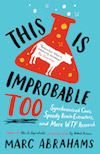
DRAMATIC IMPROBABLE READINGS: Several of the shows will also feature celebrated persons each doing two-minute-long dramatic readings from genuine — and bizarre — published scientific studies. The readings will be part of the shows at Imperial College London, Conway Hall (London), and The University of Leeds.
The tour also celebrates publication of the new book This Is Improbable Too, by Marc Abrahams. The Daily Mail has already celebrated the book, saying: “It’s almost dementedly inconsequential.”

Pole Dancers and Stock Brokers
What psychological / philosophical concept might serve as a way to connect these two photos – featuring pole dancers and stockbrokers?
One answer, a surprising one according to authors Karina Paludan Nielsen and Kristina Stockunaite (who recently participated in the MSocSc in Social Science in Service Management programme at Copenhagen Business School) is ‘Flow’ [for background about the concept of 'Flow' see note below]
Their 2012 master’s thesis, featuring the two photos, is available here ‘The surprising similarities between pole dancers and financial dealers”
“The similarities between pole dancers and financial dealers were surprising. The case studies revealed that all respondents except one had experienced flow. Thus, they stressed that one had to be intrinsically motivated as all the respondents were encountered by stress, bruises, frustrations; just to mention a few sacrifices. Hence, the respondents kept doing their job or performed their sport – simply because they liked it.”
BONUS: Author Karina Paludan Nielsen is currently a proprietor of House of Pole, Copenhagen, Denmark. [photo courtesy Copenhagen Business School publicity]
Note: Regarding the concept of ‘Flow’ : Mihaly Csikszentmihalyi (a.k.a. Csíkszentmihályi Mihály) who is Distinguished Professor of Psychology and Management at Claremont Graduate University first highlighted the concept of ‘Flow’ in his 1990 book ‘Flow: The Psychology of Optimal Experience’ which begins like this :
“THIS BOOK SUMMARIZES, for a general audience, decades of research on the positive aspects of human experience – joy, creativity, the process of total involvement with life I call flow. To take this step is somewhat dangerous, because as soon as one strays from the stylized constraints of academic prose, it is easy to become careless or overly enthusiastic about such a topic.”
BONUS (again) Experience the professor talking about ‘Flow’ here

March 9, 2014
A tour of the Museum of Bad Art
The CBS Sunday Morning television program paid a visit to our friends and colleagues at the Museum of Bad Art (MOBA):
BONUS: Back in 2003, CBS Sunday Morning, which was in those wordy days called CBS News Sunday Morning, visited to the Ig Nobel Prize ceremony [though there seems not to be video of that online]. And three years later, CBS Evening News visited:

MYSTERY: Big body through a little hole?
Some folks love a real-life forensic mystery, of which this is one:
“A matter of large body passing through a small hole: The holeproof out the window,” F. Patel, Forensic Science International, Volume 56, Issue 2, October 1992, Pages 183–188. The author, at the Department of Forensic Medicine, UMDS Guy’s and St Thomas’ Hospitals, University of London, explains:
“A baffling case of fall-from-height is described focusing on aspects of a human body passing through a small hole, within a holeproof window. It is a classic example of an unsatisfactory outcome when a scene of death is modified adversely due to delay in the commencement of scene management. The operative factors may be entirely outside the control of scene investigators. The primary medical attendant is reminded of the forensic obligations at a scence of unnatural death. Reporting this case might encourage forensic practitioners having experience of a similar case to respond through this journal.”
Here is some detail from the report — a photo of the window with the hole in it:

March 8, 2014
Ig Nobel Prize winner’s online irrational behavior course
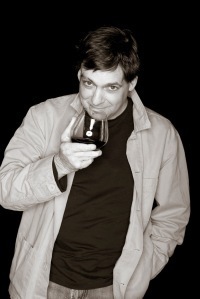 Dan Ariely, whose team was awarded the 2008 Ig Nobel Prize in medicine,* is offering an online course — free for everyone — about irrational behavior. Dan is the James B. Duke Professor of Psychology and Behavioral Economics at Duke University and a founding member of the Center for Advanced Hindsight.
Dan Ariely, whose team was awarded the 2008 Ig Nobel Prize in medicine,* is offering an online course — free for everyone — about irrational behavior. Dan is the James B. Duke Professor of Psychology and Behavioral Economics at Duke University and a founding member of the Center for Advanced Hindsight.
Some background about the course:
You make decisions all the time…. Some of these decisions might be great, while others … not so much. For example, take the mind-boggling case of someone winning a chess championship one minute and texting while driving the next. Playing chess (competently, at least) requires thinking many steps ahead, considering multiple scenarios and outcomes — whereas texting while driving is a complete and utter failure of the same kind of forward-thinking. The gap between how amazing we are in some respects and completely inept in others just highlights the invaluable nature of studying how humans think and interact with the world.
So, when do we make good decisions, and when and why do we fail? Fortunately, behavioral economics does have some answers. In “A Beginner’s Guide to Irrational Behavior,” you will learn about some of the many ways in which we behave in less than rational ways, and how we might overcome some of our shortcomings.
* That Ig Nobel Prize was given to Dan Ariely, Rebecca L. Waber, Baba Shiv, and Ziv Carmon for demonstrating that high-priced fake medicine is more effective than low-priced fake medicine. [REFERENCE: "Commercial Features of Placebo and Therapeutic Efficacy," Journal of the American Medical Association, March 5, 2008; 299: 1016-1017.]

Ig Nobel Peace Prize winner is percentally popular in Belarus
Alexander Lukashenko, the president of Belarus, who just a few months ago was awarded the Ig Nobel Peace prize, is very popular, reports the Belarusian Telegraph Agency on March 6, 2014:
Lukashenko’s approval rating at 79%
MINSK, 6 March (BelTA) – The recent poll conducted by the Information and Analysis Center (IAC) of the Belarus President Administration has revealed that the approval rating of the Belarusian President stands at 79%, BelTA has learnt.
The approval rating of the government and the parliament is about 40%, that of opposition parties is 3%.
The results of the poll suggest that the majority of Belarusians (74%) are quite happy with their life. Some 71.5% of those polled said they are confident about the future, 18% said they are not.
31% of respondents said their financial circumstances improved over the past three months; 21.5% people said their financial well-being deteriorated. Most of the participants of the poll said their financial conditions remained unchanged.
The issues that cause the biggest concern include an increase in prices for goods and services and the increasing alcohol abuse and drug abuse.
The absolute majority of people (81%) called the social and political situation in the country ‘stable’. Only 2% of the respondents said they might consider taking part in protests.
Despite President Lukashenko‘s popularity, few are applauding him, at least in public. President Lukashenko was awarded the 2013 Ig Nobel Peace Prize for making it illegal to applaud in public; the prize was jointly awarded to the president and to the Belarus State Police, for arresting a one-armed man for applauding. [Yet, one can demonstrate one's appreciation.]
(HT Stephanie Carvin)
BONUS: President Lukashenko builds on his Ig Nobel legacy
BONUS: Decree No. 537 of 29 November 2012: On Declaring 2013 the Year of Frugality in Belarus

Some physics of trick roping
Trick roping and physics are revealed as being more or less the same thing (One of the revealers won an Ig Nobel Prize several years ago for revealing the reason spaghetti breaks into interesting pieces). James Morgan reports for BBC News:
By studying trick roping as a science, a French physicist has taught himself to lasso like a rodeo veteran. Anyone can teach themselves the famous “flat loop” by following some basic formulae, says Dr Pierre-Thomas Brun, of EPFL in Switzerland. He showed off his ‘cowboy physics’ skills at the American Physical Society meeting in Denver….
But while these loops spellbind our imagination, they also harbour useful mathematical secrets. ”Elastic threads are everywhere in our daily lives – from hair and textile yarns to DNA and undersea broadband cables. Even the honey you pour on your toast,” said Dr Brun who worked on the research with his colleagues, Dr Basile Audoly and Dr Neil Ribe….
That Basile Audoly is the same Basile Audoly who shared the 2006 Ig Nobel Prize for physics with his colleague Sebastien Neukirch of the Université Pierre et Marie Curie, Paris. They were honored for their insights into why, when you bend dry spaghetti, it often breaks into more than two pieces. [REFERENCE: "Fragmentation of Rods by Cascading Cracks: Why Spaghetti Does Not Break in Half," Basile Audoly and Sebastien Neukirch, Physical Review Letters, vol. 95, no. 9, August 26, 2005, pp. 95505-1 to 95505-1.]
Pierre-Thomas Brun and Basile Audoly have a lasso-physics paper in prep. Meanwhile, the trick-roping paper that Brun presented at the American Physical Society Meeting in Denver is
“The mechanics of trick roping.” The abstract explains:
“Trick roping evolved from humble origins as a cattle-catching tool into a sport that delights audiences the world over with its complex patterns or ‘tricks,’ such as the Merry-Go-Round , the Wedding-Ring, the Spoke-Jumping, the Texas Skip… Its implement is the lasso, a length of rope with a small loop (‘honda‘) at one end through which the other end is passed to form a large loop. Here, we study the physics of the simplest rope trick, the Flat Loop, in which the motion of the lasso is forced by a uniform circular motion of the cowboy’s/cowgirl’s hand in a horizontal plane. To avoid accumulating twist in the rope, the cowboy/cowgirl rolls it between his/her thumb and forefinger while spinning it. The configuration of the rope is stationary in a reference frame that rotates with the hand. Exploiting this fact we derive a dynamical ‘string’ model in which line tension is balanced by the centrifugal force and the rope’s weight. Using a numerical continuation method, we calculate the steady shapes of a lasso with a fixed honda, examine their stability, and determine a bifurcation diagram exhibiting coat-hanger shapes and whirling modes in addition to at loops. We then extend the model to a honda with finite sliding friction by using matched asymptotic expansions to determine the structure of the boundary layer where bending forces are significant, thereby obtaining a macroscopic criterion for frictional sliding of the honda. We compare our theoretical results with high-speed videos of a professional trick roper and experiments performed using a laboratory ‘robo-cowboy.’ Finally, we conclude with a practical guidance on how to spin a lasso in the air based on the results of our analysis.”
(Thanks to investigator Neil Judell for bringing this to our attention.)
BONUS: Some physics of some toys, as described at that same physics meeting:
“Snap, crack and pop: What elastic instabilities in toys can teach us,” Dominic Vella [University of Oxford], abstract for an Invited Paper for the March 2014 Meeting of the American Physical Society, The author writes:
“The mechanism of many modern toys rely on some form or other of elastic instability, from the locomotion of the ‘Hexbug nano‘ to the snapping of a ‘Hopper popper.’ In this talk I will discuss some fundamental mechanical problems that are inspired by the mechanism of such toys. A particular focus will be on the ‘snap’ and ‘pop’ phases of the Hopper popper but I will also discuss the ‘crack’ of a whip and other examples of dynamic elastic instabilities.”

He studies little kids’ hand smearing
 George Peez [pictured here], Professor of Art Education at the Goethe University in Frankfurt am Main, studies many things, including the way young children use their hands to smear things, a process known to some as “drawing”:
George Peez [pictured here], Professor of Art Education at the Goethe University in Frankfurt am Main, studies many things, including the way young children use their hands to smear things, a process known to some as “drawing”:
“Phänomenologisch orientierte Fotoanalyse – ‘Schmieren‘ [Phenomenologically oriented photo analysis - "smearing", the start of the children's drawings], der weitgehend unerforschte Beginn der Kinderzeichnung,” Georg Peez, Photographs in educational case studies, Munich ( Kopaed Verlag ) 2006. The author explains [in German, but auto-translated here]:
” instead of the proposed by Hans-Günther Richter traditional method, the research on the “smearing” product and result-oriented align, ie “fingerprints on windows and furniture surfaces, spinach stains and their motor-tactile changes Breispuren or similar document” (Richter 5 1997, p 24), is in the present investigation exploring the processual nature of greasing in the foreground. The activity of greasing is investigated qualitatively and empirically using the example of a 9 1/2 month old girl.”
Here’s detail from the study:
A Heise news report further explains [also in German, also here auto-translated]:
“Children make the same movements as the touch screen user when they explore a porridge, a Frankfurt scientists has observed”

Marc Abrahams's Blog
- Marc Abrahams's profile
- 14 followers


